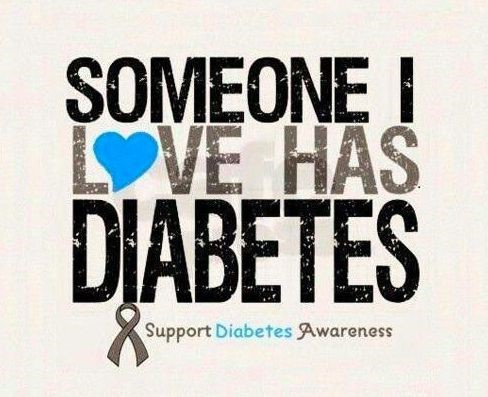
Today, November 14, is World Diabetes Day. Monuments across Canada are lit blue in recognition of Canadians living with diabetes or prediabetes. The First Nations Health Authority, the International Diabetes Foundation (which started this event), The World Health Organization, Diabetes Canada and other organizations encourage everyone to wear blue to mark the occasion, show their support and share their photos on social media.

About the "Unite for Diabetes" symbol: "The colour blue reflects the sky that unites all nations and is the colour of the United Nations flag. The blue circle signifies the unity of the global diabetes community in response to the diabetes pandemic. We chose a simple blue circle because of its frequent occurrence in nature and because myriad cultures over time have used the circle to symbolize life, mother earth and health. The unbreakable unity it represents mirrors the global diabetes community." See https://www.idf.org/our-activities/world-diabetes-day.

On World Diabetes Day, Wear Blue to Show Your Support for Those Living with Diabetes or Prediabetes
A Message from Dr. Evan Adams, FNHA Chief Medical Officer
November is Diabetes Awareness Month, and today, Tuesday, November 14, is World Diabetes Day, so I'd like to talk about preventing diabetes by cutting down on added sugars. Diabetes continues to impact the quality of life of our people; someone you love may already be dealing with this disease and doing what they can to manage their blood sugar levels. As a physician, I know that one of the best things we can all do for our health – and our family's health -- is to reduce the amount of added sugar and increase the amount of fiber we consume. As a human being, however, I know that cutting down on added sugars is easier said than done, so I'm sharing with you the strategies I find most helpful in my personal health and wellness journey. Please read on and learn -- or be reminded – about how you can control, prevent or lessen the risk of diabetes for yourself and your children.
What is diabetes? Here is a definition: http://www.diabetes.ca/about-diabetes/types-of-diabetes from Diabetes Canada: "Diabetes is a chronic, often debilitating and sometimes fatal disease, in which the body either cannot produce insulin or cannot properly use the insulin it produces. Insulin is a hormone that controls the amount of glucose (sugar) in the blood. Diabetes leads to high blood sugar levels, which can damage organs, blood vessels and nerves. The body needs insulin to use sugar as an energy source."
Strategies to decrease sugar intake
1. First, know your limits! To begin reducing your sugar consumption, a good rule of thumb is that women should consume no more than 24 grams of added sugar a day (that's six teaspoons, as there are four grams in one teaspoon), and men no more than 36 grams (nine teaspoons). Sugary drinks are especially unhealthy. Did you know that some Starbucks drinks – for example, a Grande Chai Latte or Hot Chocolate -- have 42 grams of added sugar? And that a 12-oz. can of Coke has over 40 grams of added sugar? That's a whopping 10+ teaspoons each! Sadly, many, many other beverages, both hot and cold, contain this much sugar.
2. Follow traditional health teachings. The FNHA has identified four wellness streams that, if pursued, will help First Nations and other Aboriginal people greatly improve health and wellness. They are: i) Being Active, ii) Eating Healthy, iii) Nurturing Spirit, and 4) Respecting Tobacco (using it only for traditional purposes, like smudging). I urge you to click on this link http://www.fnha.ca/wellness/wellness-and-the-first-nations-health-authority/wellness-streams and read about how to get these streams flowing in your life so you can enjoy it to the fullest.
3. Eat real foods. Avoid "diet," "reduced-fat" or "fat-free" products, which are almost always full of sugar to replace the pleasurable taste of fat. For example, fat-free frozen yogurt is often flavoured with high-fructose corn syrup, which is especially harmful to our health and quickly converts to fat in our bodies. Is some sugar OK? How about sweeteners? Here is some helpful information on sugars and sweeteners:
http://www.diabetes.ca/diabetes-and-you/healthy-living-resources/diet-nutrition/sugar-sweeteners. Read ingredients/labels/nutrient charts or make things scratch so that you can know or control how much sugar goes into them. Don't buy or make products with sugar serving sizes greater than nine grams (just over two teaspoons). Be aware that sugar may be present in everything from salad dressings to breads and crackers to savoury items and condiments. And that white breads, flours, rice and processed/refined/white carbohydrates convert into sugar once consumed, elevating your insulin levels just as much. Choose whole/unrefined/brown grains or nut-based flours instead of white flours, and steel-cut oats (not quick oats), to keep insulin levels more stable and prevent the cravings that follow an insulin rush.
4. Focus on protein, fat, fiber and flavour! Enjoy protein, healthy fats and fiber with your meal, as these slow down the release of blood sugar in your body and keep you full longer. For example, add almonds to oatmeal or have eggs and avocado on toast. Seafood (which is rich in super healthy omega-3 fatty acids) and lean, unprocessed meats are excellent sources of protein. Use fats from avocados, nuts, seeds, and heart-healthy oils like olive oil, walnut oil, and coconut oil. To add natural sweetness to foods, use vanilla bean and vanilla extract, spices, or citrus zests. Order your latte unsweetened, and flavour it with cinnamon, nutmeg, and ginger instead of sugar. (Cinnamon has the added bonus of naturally regulating blood sugar, which helps control your appetite.)
5. Do what you can to reduce the stress in your life. Walk outdoors, get regular exercise, take up an enjoyable hobby, listen to relaxing music, visit with friends or family, or engage in some other healthy activity. Also do your best to get enough sleep if possible. When you're feeling rested and happy, you won't crave sweets and refined carbs as strongly as you do when you're stressed out or feeling out of balance. Be prepared: schedule daily meals and healthy snack foods.
6. Drink lots of water. When you're thirsty, reach for something that is extremely good for you, as well as calorie- and sugar-free: WATER! Water is sacred, water is life-giving, and – once you retrain yourself to love what's good for your body – you'll crave it and wonder why you ever drank toxic, chemical-laden, sugary drinks that harmed your body. If you don't enjoy plain water right now, make it delicious by infusing it with tasty and nutritious additions such as chopped-up strawberries, mint leaves, lime / lemon / cucumber slices, – whatever you like!
It is also very important to know that sugary beverages are not limited to pop/soda – they're often disguised as "healthy" products and include fruit juices, sports drinks, flavoured waters, sweetened coffees and teas, yogurt drinks, alcohol and more. Since fiber slows down the effects of sugar, eating an orange or an apple is far better for health than drinking orange or apple juice.
7. Finally: Be patient with yourself and stick with your plan! Remember that it takes an average of 14-21 days to create a new habit, so push through cravings and choose something healthy to satisfy your sweet tooth, like fruit and other whole food ingredients (remember, not diet "foods" or processed "foods"). The good news is that you can learn to love food that is good for you again. At first you may think of processed foods when faced with natural foods, but stick it out and you will become more sensitive to the rich flavours that occur naturally in fruits and vegetables. You'll look forward to a juicy peach or some fresh blueberries and raspberries – and these are the things that will love you back, causing your mood, body, skin and other organs to look and feel much better since they're loaded with antioxidants, vitamins and fiber. You'll find it easier to quit eating things like bread, pasta and processed foods, and not miss them (or how bloated and sluggish they make you feel)!
More good news is that once your taste buds adjust to your improved way of eating and drinking, things with added sugar -- like sweetened drinks, ice cream and candy -- will taste too sweet! You will be satisfied with less sugar than you were before, and fruits and vegetables will taste much better too.
Yours in Wellness,
Dr. Evan Adams
Remember to wear blue and share your photos on social media to show your support of World Diabetes Day!

